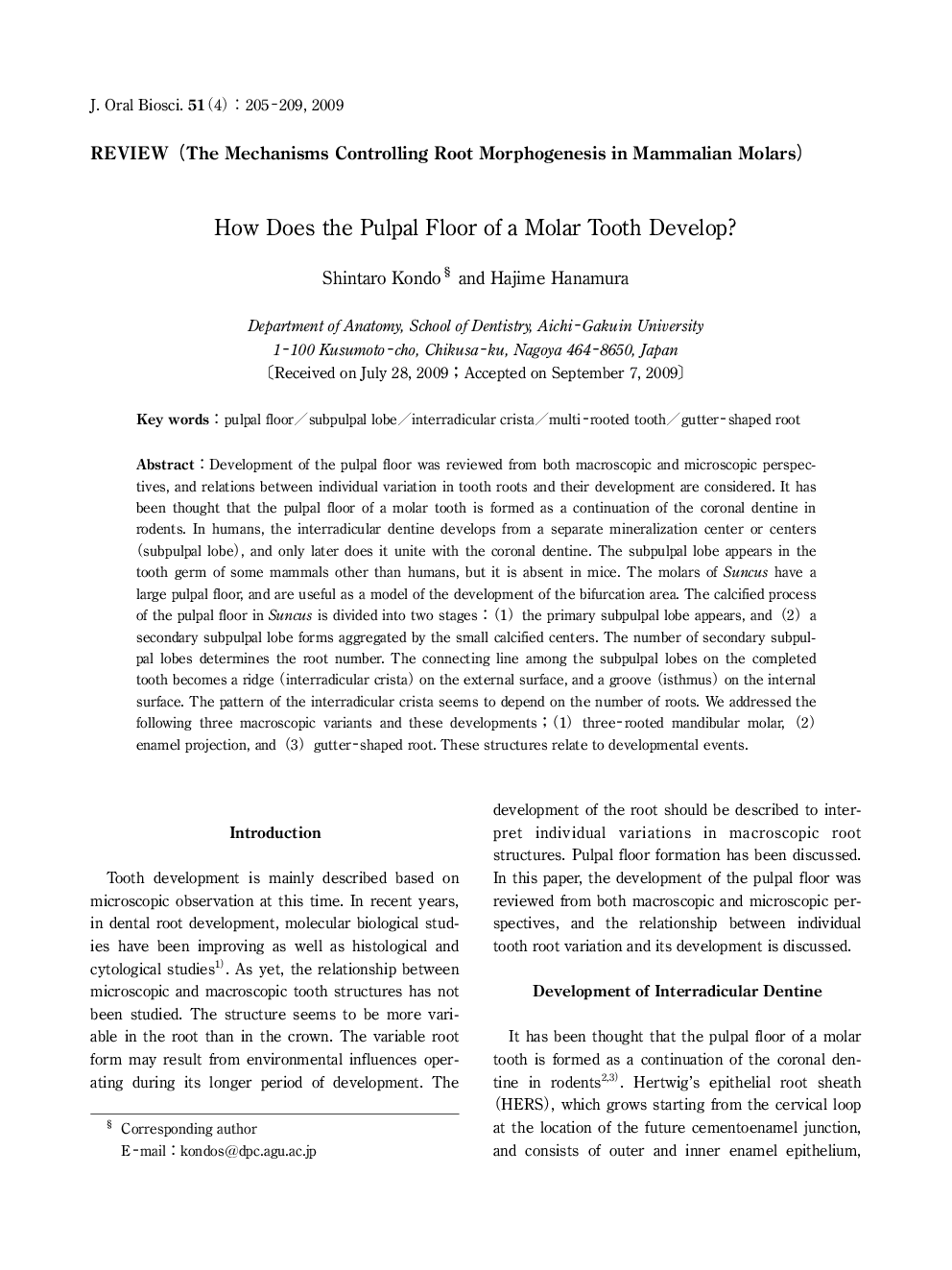| Article ID | Journal | Published Year | Pages | File Type |
|---|---|---|---|---|
| 2777000 | Journal of Oral Biosciences | 2009 | 5 Pages |
Development of the pulpal floor was reviewed from both macroscopic and microscopic perspectives, and relations between individual variation in tooth roots and their development are considered. It has been thought that the pulpal floor of a molar tooth is formed as a continuation of the coronal dentine in rodents. In humans, the interradicular dentine develops from a separate mineralization center or centers (subpulpal lobe), and only later does it unite with the coronal dentine. The subpulpal lobe appears in the tooth germ of some mammals other than humans, but it is absent in mice. The molars of Suncus have a large pulpal floor, and are useful as a model of the development of the bifurcation area. The calcified process of the pulpal floor in Suncus is divided into two stages : (1) the primary subpulpal lobe appears, and (2) a secondary subpulpal lobe forms aggregated by the small calcified centers. The number of secondary subpulpal lobes determines the root number. The connecting line among the subpulpal lobes on the completed tooth becomes a ridge (interradicular crista) on the external surface, and a groove (isthmus) on the internal surface. The pattern of the interradicular crista seems to depend on the number of roots. We addressed the following three macroscopic variants and these developments ; (1) three-rooted mandibular molar, (2) enamel projection, and (3) gutter-shaped root. These structures relate to developmental events.
